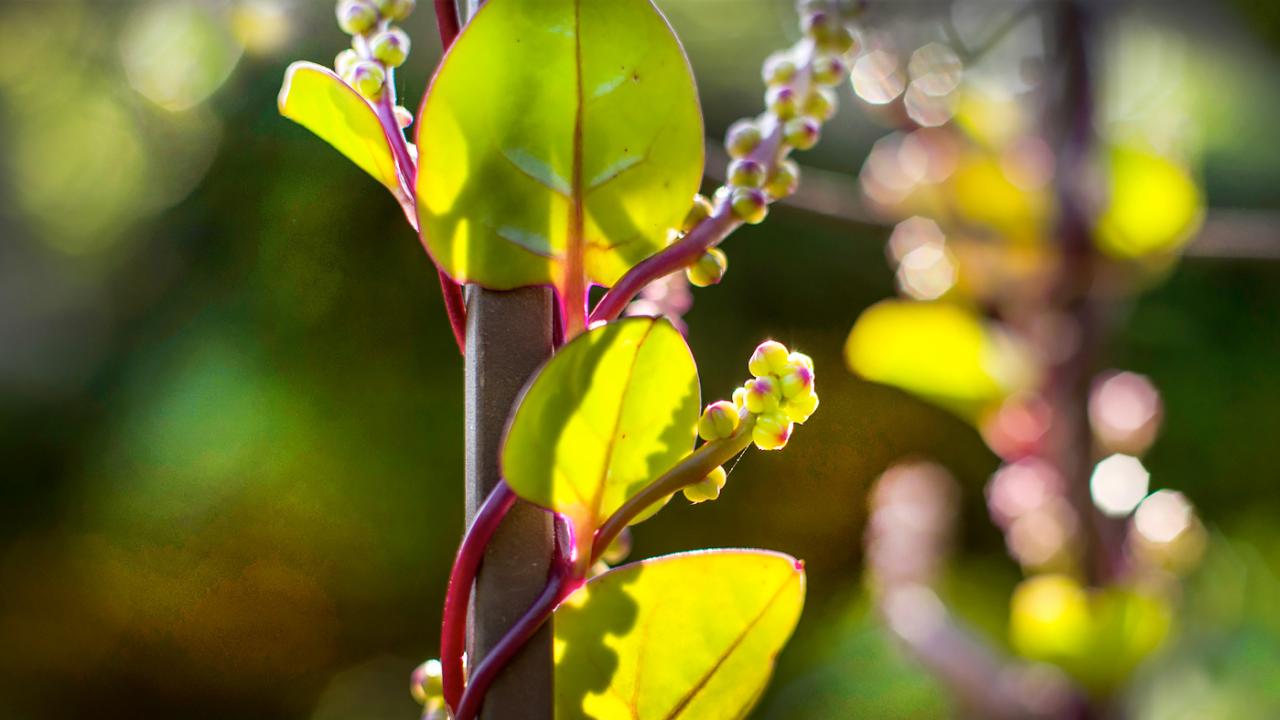

Plants & Gardening
Garden Stories
Moving Houseplants Back Indoors
When September comes to the Chicago area, even if it's been warm outside, it’s time to start thinking about moving your houseplants inside.
The best time to do this is when temperatures outside are relatively close to the temperatures indoors, meaning mid- to late September. Before you move everything in, however, there are four quick steps you’ll want to take to help ensure a successful winter of windowsill gardening.

Sunburn causes brown spots on leaves. Trimming off damaged leaves helps keep plants looking good all winter.
1. Clean up any dead or damaged growth.
Why bring any additional mess indoors when you don’t have to? Carefully remove any broken branches, sunburned leaves, or otherwise unsightly growth from your plants.
2. Lightly trim back plants as needed.
This step is optional, and you really only need to do it if your plants have become large and overgrown. Never remove more than one-third of the growth at a time. Removing too much can stress the plant and send it into shock, which can be hard to recover from indoors.
3. Check thoroughly for pests, and treat as needed.
One of the biggest ways to set yourself up for success is to start with clean plants. There are several pests that can cause problems indoors. The most common are mealybugs, spider mites, scale, and aphids. Insecticidal soap is a lower toxicity insecticide that is safe for most houseplants and will take care of nearly any pest problem you might have. As with any chemical, make sure to follow all package instructions. It is NOT recommended to use soapy water—this eats away at the cuticle (a protective waxy layer on the leaf), making it more vulnerable to disease problems in the future.

Large-leaved plants are particularly susceptible to spider mites.

Spider mites can also cause brown edges that mimic sunburn. Look for the telltale webbing to determine if you have mites.

Mealybug feeding on the stem of Dioscorea elephantipes
4. Finally, resist the urge to repot unless necessary.
Sometimes plants have simply grown too large for their pots, in which case it’s OK to repot. But don’t repot if the plant doesn’t need it, as this adds unnecessary stress that could harm the plant in the long term. Always use soil specifically for containers (potting soil). Black dirt is too heavy and will encourage rot. When repotting, select a new pot that’s only 1 or 2 inches larger in diameter. Anything much larger than that can encourage rot because the soil will stay wet for a long time.
For specific questions about houseplant care, contact our Plant Information Service.

The same care tips also apply to overwintering tropical plants, such as palms and bromeliads.

